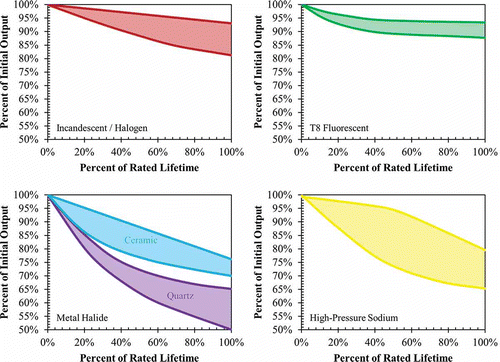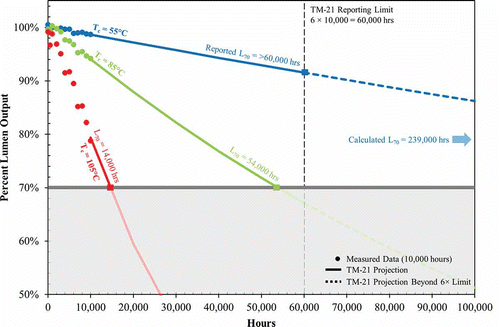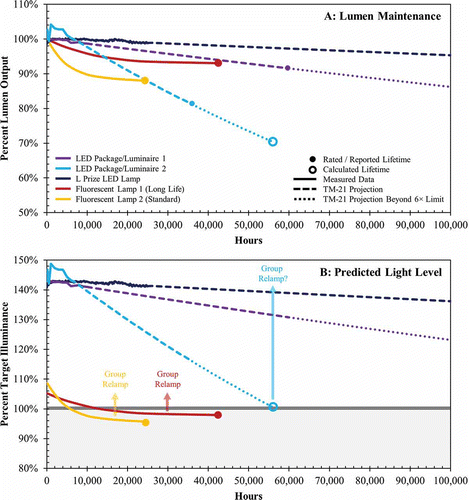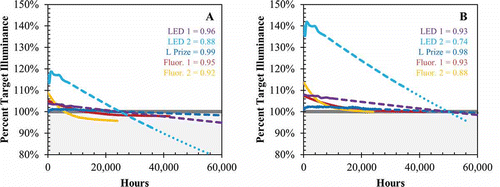Figures & data
Fig. 1 Typical lumen maintenance characteristics for different light sources. Note that the rated lifetimes in hours can be substantially different for these light sources, which are just a subset of many different available source types.

Fig. 2 Measured and projected lumen maintenance of one type of LED package at three different case temperatures. Thermal characteristics can have a dramatic effect on performance over time.

Fig. 3 (A) Lumen depreciation characteristics for three LED and two fluorescent sources. (B) Illuminance level relative to the target for the five different sources. The LEDs have LLDs of 0.70, whereas the fluorescent lamps have LLDs of 0.92 (standard) and 0.95 (high-performance).

Fig. 4 (A) Target light levels using LLDs based on 50% of the design lifetime (50,000 h), as shown. Using this method is similar to the current method used for conventional sources. For the second half of the design lifetime, light levels would be below the target. Poor-performing LED products could result in substantial reductions in illuminance. For all sources, relamping or replacement would be needed if the product lifetime were shorter than the design lifetime. (B) Target light levels using LLDs based on 100% of the design lifetime (50,000 h), as shown. The LLDs for the example fluorescent sources are also adjusted to reflect the expected output at the end of the rated lifetime. This method results in the system never being predicted to deliver less than the target illuminance during the design lifetime. For all sources, relamping or replacement would be needed if the product lifetime were shorter than the design lifetime.

